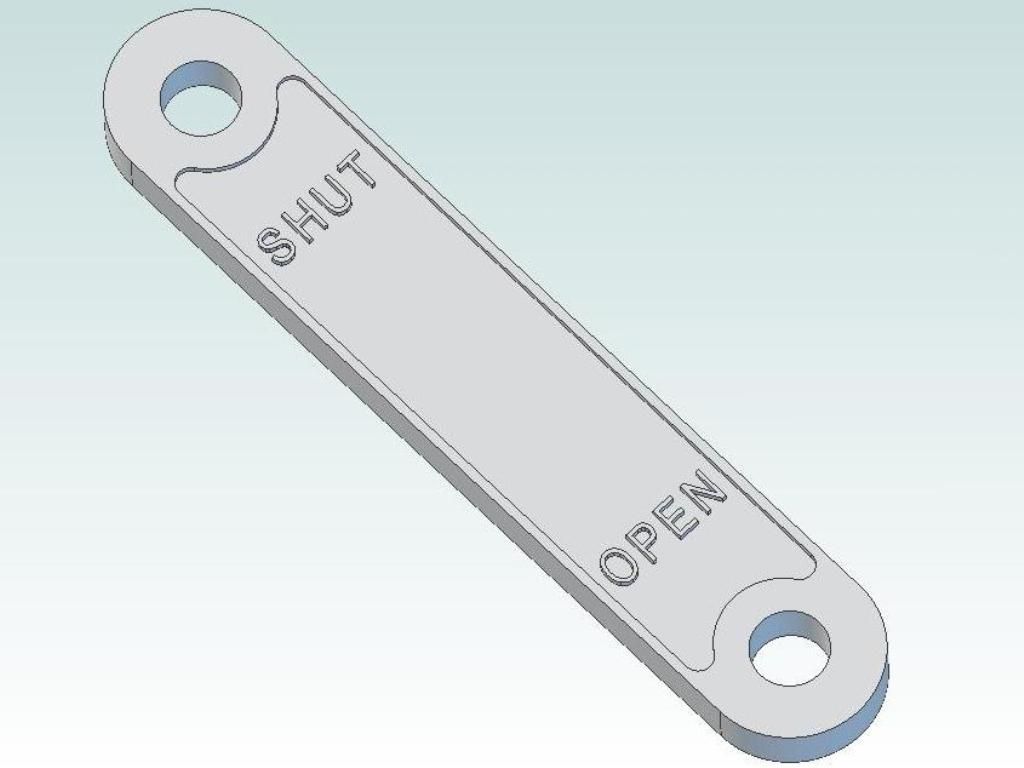Thanks for the replies, plenty to think about. To avoid confusion this is the current CAD model of the part:

For scale the width of the part is 3/8" and the lettering is 0.08" high. Material is low carbon steel.
The supplier I was looking at was Drill Service, about the same price as APT and a quarter the price of the YG cutters from Cutwel! Sadly Drill Service don't provide any detailed cutting parameters. I found something from Harvey Tool where, for a 0.015" cutter, they recommend a chip load of 0.00009" with a depth of cut of 1D and radial cut of 0.13D for finishing in steel. They seem quite agressive depths of cut. Out of interest I looked back at my CAM files for the governor bevel gears (1mm ballnose in bronze) and the smokebox nameplate (1mm endmill in engraving brass) and I ran both cutters at 24000rpm and 350mm/min.
I'd thought about engraving cutters, but assumed they wouldn't be good for raised lettering; is that a misconception? Special thanks to Adam for his generous offer, which I'll keep in mind as I decide which way to go. I have some engraving cutters from Arc but they have a sharp point unlike the Taylor Hobson ones.
I had rather assumed that I'd need to pocket out most of the metal with a larger cutter and use the small one to re-machine just the detail. But oddly the CAM system doesn't think it'll take long to do the whole thing with the small cutter. Likewise using a tapered cutter and V-carve was suprisingly quick.
As an aside I use a program called NCPlot to sanity check my G-code. Run times are normally quite close to the CAM program estimate, and a bit more accurate. Today I've been CNC milling and drilling the valve chest covers. The CAM program thought each one would take 40 minutes, which I finally got down to 30 minutes by tweaking parameters. NCPlot thought it'd take 14 minutes, which it did. Not sure why there's such a big difference, although I don't normally do a lot of CNC hole drilling. So may be the CAM has it's knickers in a twist over drilling?
I run flood coolant on the CNC mill so getting rid of the chips shouldn't be an issue.
In the picture I have of the regulator on a full size engine the definition of the lettering is fairly poor, so may be I shouldn't try too hard!
Andrew
DiogenesII.






